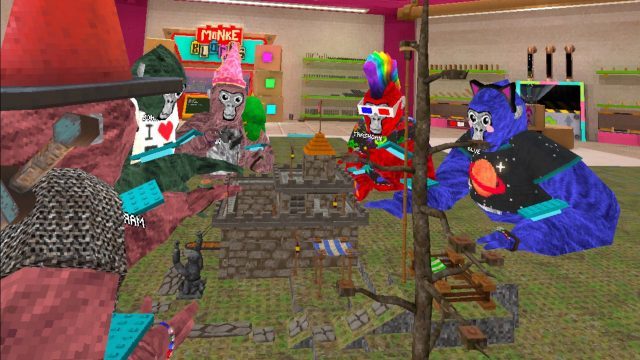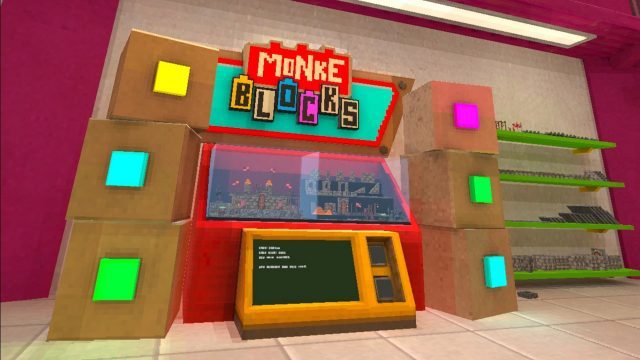One of VR’s biggest hits, Gorilla Tag, is expanding a previously tested level creation mode and making it a permanent part of the game. The so-called ‘Monke Blocks’ allow friends to build together and then play inside of their shared creations. Meanwhile, the studio behind the up-and-coming Digigods social VR game recently snagged a $2.6 million investment. Both developments show that user-generated content (or UGC) has become a central pillar to successful social VR games.
VRChat, Rec Room, Roblox, and Horizon Worlds are all social VR games that have found major traction. And all of them share a common thread: user-generated content. Friends that build together, stay together… apparently.
From the outside, indie VR hit Gorilla Tag might look more like a straightforward multiplayer game than a social VR app. But the title’s seamless multiplayer framework (where players can literally wander from one lobby to another) and free-form rules have made it as much of a hang-out and playground as it is a pure game.
And now, with the inclusion of the ‘Monke Blocks‘ feature as a permanent mode, Gorilla Tag is taking yet another step into the realm of social VR by giving players the ability to build and play within their own creations.

Using a block-based system, players can collaboratively snap pieces together to build new levels, then shrink themselves down to jump around those levels just like they would in any normal round of Gorilla Tag. In fact, while some players are normal-sized and busy constructing their blocks, other players can be shrunk down and exploring the ongoing creation at the same time.
To monetize this new feature, players will be able to purchase new sets of blocks (to expand the look and feel of their creations) using Gorilla Tag’s premium currency called ‘Shiny Rocks’. The first set will have “medieval castle-themed pieces” and be priced at 6,000 SR (about $30).

This kind of ‘build and play’ setup is known as user-generated content (or UGC), and it has become a central pillar of successful social VR games, both old and new.
And the next title from Another Axion (the studio behind Gorilla Tag), called Orion Drift, aims to do something similar, by giving players access to a huge playground and letting them decide where to go and what to do. In the future, the studio says players will be able to make their own mini-games and rules within.
We reported earlier this year that the UGC-focused Yeeps had already reached 360,000 monthly active users. This month Squido Studio, the developer of another UGC-focused game called Digigods, raised a $3 million seed investment from Triptyq Capital, with participation from Grishin Robotics, FJ Labs, Hartmann Capital, Fairway Capital, Earthling VC, and the Canada Media Fund (CMF), according to VentureBeat.
Digigods launched in April 2024, less than a year ago. Even so, its UGC-centric design has already attracted 100,000 unique players, according to VentureBeat. Not to mention more than 10,600 user reviews, averaging 4.8 out of 5 stars (a rare feat among games on the Quest platform). It remains in Early Access for now, but could be poised for accelerated growth once it reaches its full release.
While UGC is the clear unifying theme across all the most successful social VR games, there’s also a clear division between old and new: the way players move.
While the older generation of social VR games like Rec Room, VRChat, and Horizon Worlds all use traditional thumbstick or teleport locomotion, the newer generation (Orion Drift, Yeeps, and Digigods) all lean heavily into the arm-based locomotion that was popularized by Gorilla Tag. That makes Gorilla Tag the dividing line between old-school and new-school when it comes to social VR games.
In many ways, that same division in locomotion method seems to also be a division in demographic. The new-school, which their arm-based locomotion, seem to have populations that lean more toward Gen Z than the millennial and older crowd.







